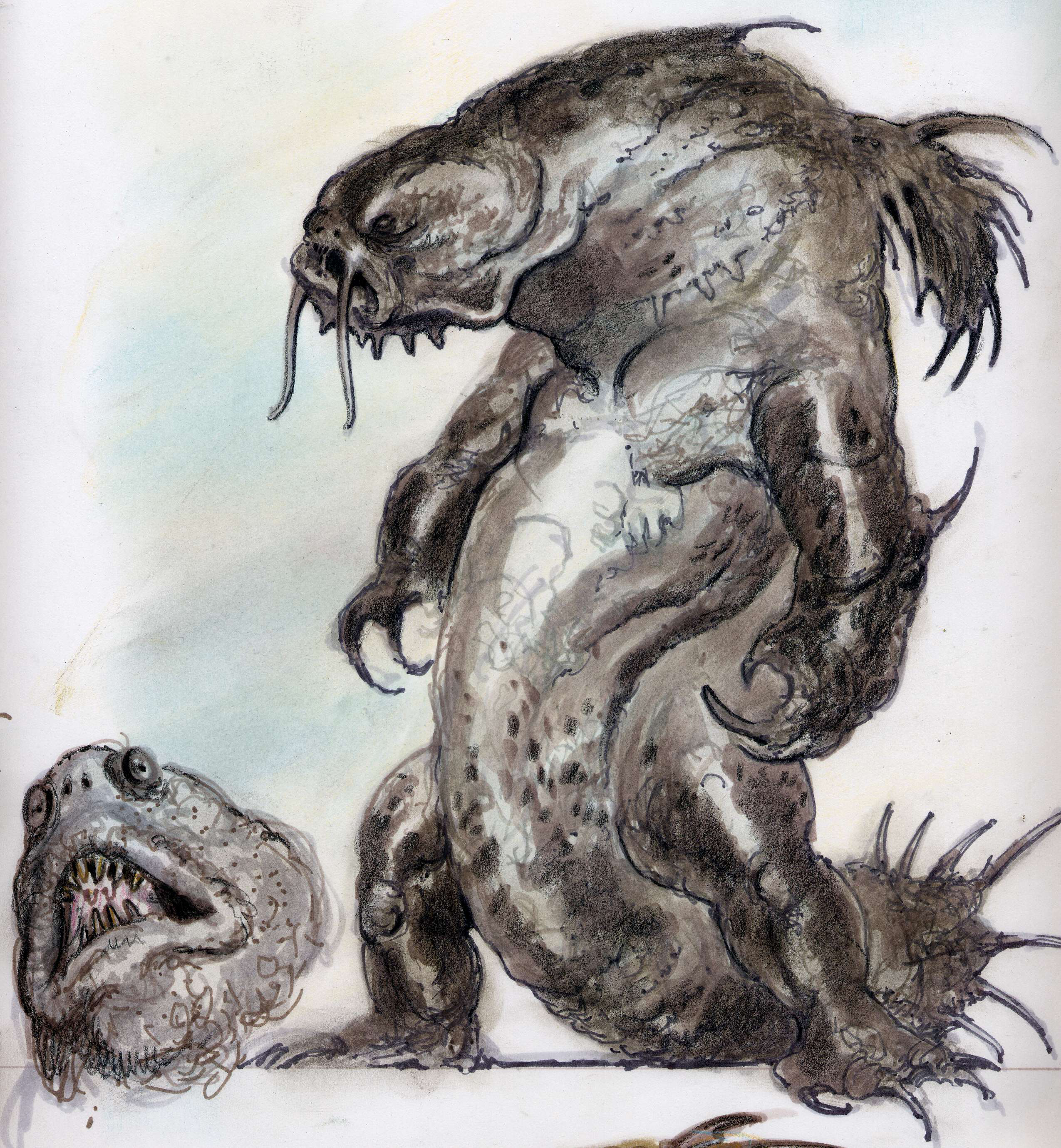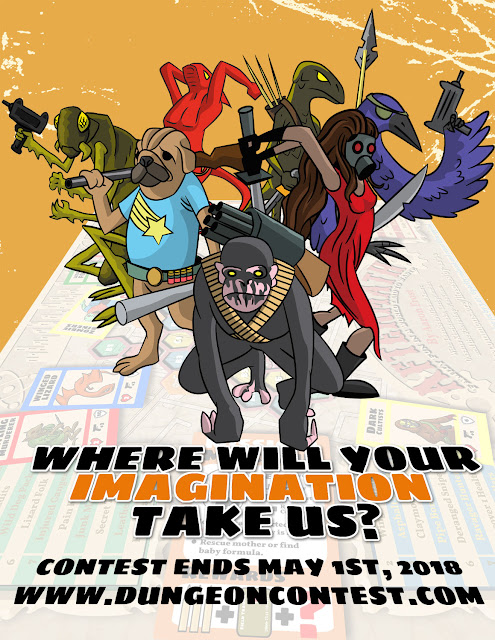Greetings, wastelanders! Today, I bring three complementary creatures for your terror and amusement. I also wax philosophical about weapon damage and why one base damage die is enough.
In ICRPG, basic weapon damage is d6. Longbow, crossbow, laser, club: d6. Variety comes through stats and gear, some of which increase die type or add bonuses to rolls. Blood and Bone uses the same idea: what you can do with a weapon make the difference, not the weapon itself. In Blood and Bone, your traits make your weapon choice matter.
The first time I saw d6 weapon damage was in the D&D Blue Box. I was about ten and I didn’t know much about weapons or fighting. D6 damage for everything from a butter knife to a bec de corbin seemed boring and lame.
Now I know that a dagger can kill you as dead as a great sword. I know that a fighter’s strength, skill, speed, experience, and luck matter more than the weapon of choice. I know that weapons do damage when they skirt your defenses and deplete your luck, blood, and stamina.
You can argue “yes, but with all things being equal…”, but they never are. A knife is better than nothing, a club is better than a knife, and a gun is better than a club…sometimes. Ranged beats melee…sometimes. Knives are harder to disarm than clubs or guns…sometimes. Clubs and knives tie in skill investment vs. return on trauma; you need very little skill to win with either. We’re not even talking yet about terrain, lighting, psychology, adrenaline, armor or any of the other factors that influence combat.
There’s no such thing as a fair fight unless we work hard to fabricate one. We do this by removing variables. We provide a clean flat surface, weight classes, rules, cut men, referees, coaches…fighting is brutal, but it’s not combat. Combat is deadly chaos. Who does the most damage is more complex than rock-paper-scissors. D6 for base weapon damage works for me because it allows other factors to matter more.
Enough theory. Let’s look at some monsters!
Monster sets are trios of monsters that complement and build on one another's strengths. ICRPG's streamlined monster design makes it easy to dovetail their concepts and mechanics.
The monster set concept comes from Hankerin Ferinale, the inestimable force behind the Runehammer brand. Monster sets was a topic on his Patreon, linked to below. For a buck a month, you get access to some of the most innovative gaming tools and theory around. A worthy investment for newbies and grognards alike! On to the beasties...
Channel Lurkers
These are the foot-soldiers. They live to feed.
- One heart (ten hp)
- Rolls: +2 Str, Con, weapon damage
- Tough bastards. Melee attacks against them are always Hard.
- Swat, swat, bite: weapon damage
- Taste the air: No combat penalties for darkness
- Taste for blood: When any character loses half their hit points, channel lurker attacks against them are easy for the rest of the encounter.
Blasphemous Croaker
These are the leaders, the ones who give purpose to the lurkers.
- Two hearts (twenty hp)
- Rolls: +2 all stats, weapon damage
- Really tough bastards. All attacks against them are always Hard.
- Glow-touched: magic damage (radiation burn)
- Taste the air: No combat penalties for darkness
- Pheromone frenzy: One target gains +2 to hit and damage
- Blasphemous Croak: All non-catfish within far range make Cha saves or may take no action and may only move Near for the next turn.
Big wretched Science Machine (BWSM)
This is the thing they worship, guard, obey…
- One heart
- Rolls: +4 to all rolls
- Hard to kill: ignore damage under 10, take only one damage per hit.
- Lightning arc: Magic damage, damage above six arcs to another target, re-roll to hit. Above six arcs to another target, etc. 3 attacks per round. If the arc hits a channel lurker, it is healed instead of harmed. If an arc hits a blasphemous croaker, the croaker can automatically direct an arc to another target regardless of how much magical effort it absorbs.
- Floats on air: grav-based crackly giant sphere
- Seismic thud: all save vs. prone and basic effort damage, close range
- +3 to all attacks and damage
- Horrid keening: All non-catfish within far range make Cha saves or may not move and all attempts are Hard. If already hard, increase Target by 1.
Channel lurkers can be the orcs of a PA campaign: expendable, bestial and reliably malicious. Maybe the BWSM is in a food depot, originally an AI with an altruistic mission-driven slowly insane through isolation and trauma. Some good dogs may be able to restore or re-program the BWSM for its mission of food security.i
We’ve covered a lot of ground here, wastelanders. Let me know in the comments if you’ve found anything useful along the way! I’m also interested to know what content you’d like to see explored on the Ragged Road: more maps? A Car-based loot table? Systems? More monsters? Spit your need and be witnessed!
Don’t forget to share!
Links
· Runehammer Patreon, the inspiration for monster sets
· Other Dust, a great PA resource
· Pugmire, a game about good dogs in a bad world
· Blood and Bone, a gritty, low-magic Sword and Sorcery RPG that delivers the Sword & Sorcery vibe.




